Charles M. Kozierok The TCP-IP Guide
Подождите немного. Документ загружается.

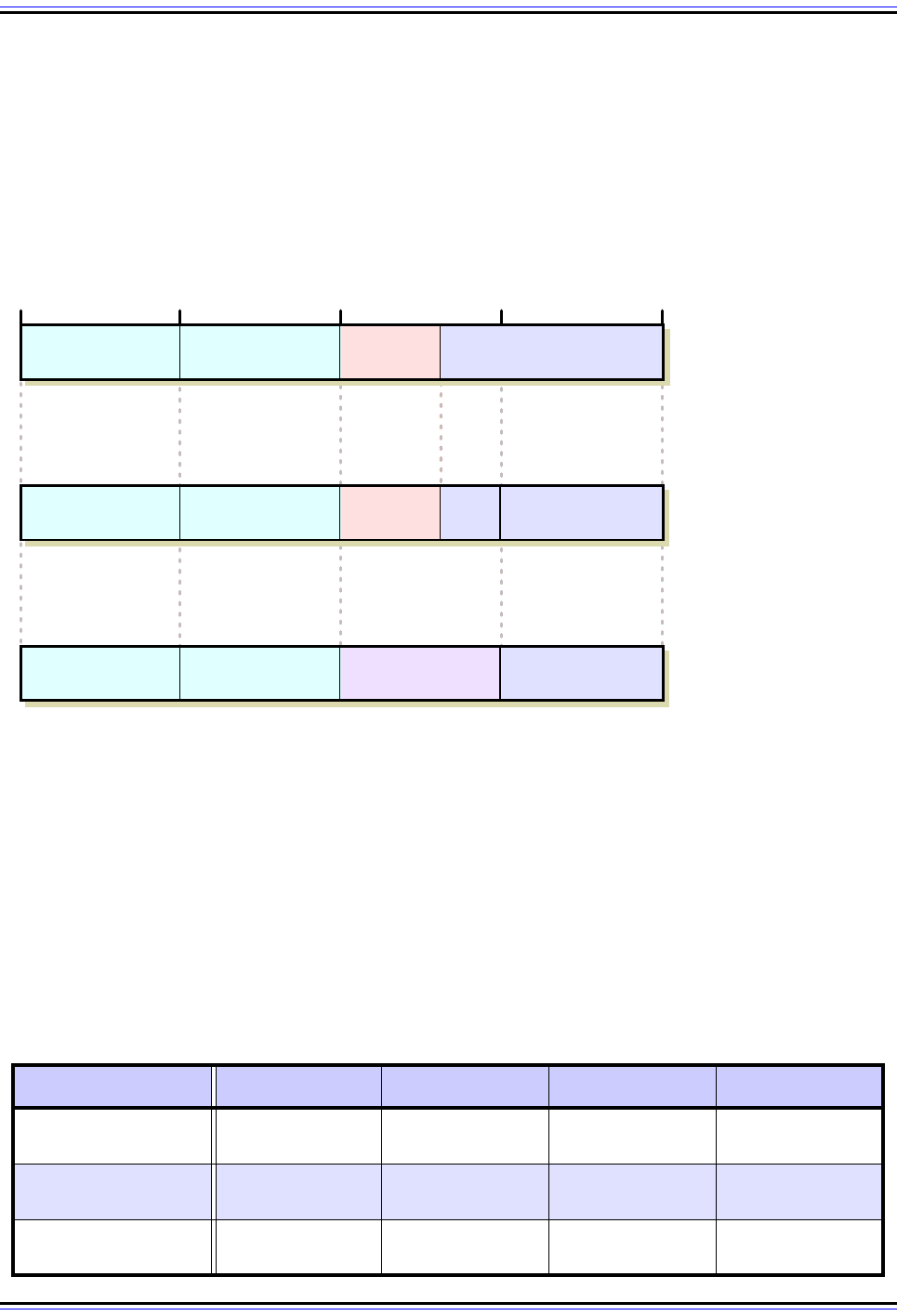
The TCP/IP Guide - Version 3.0 (Contents) ` 361 _ © 2001-2005 Charles M. Kozierok. All Rights Reserved.
Let's take a quick example to show what this is all about. Suppose we have the Class B
network 154.71.0.0. We decide to subnet this using 5 bits for the subnet ID and 11 bits for
the host ID. In this case, the subnet mask will have 16 ones for the network portion (since
this is Class B) followed by 5 ones for the subnet ID, and 11 zeroes for the host ID. That's
“11111111 11111111 11111000 00000000” in binary, with the bits corresponding to the subnet
ID highlighted. Converting to dotted decimal, the subnet mask would be 255.255.248.0.
Figure 66 illustrates this process.
Applying the Subnet Mask: An Example
Now, let's see how the subnet mask might be used. Suppose we have a host on this
network with an IP of 154.71.150.42. A router needs to figure out which subnet this address
is on. This is done by performing the masking operation shown in Table 51 and Figure 67.
Figure 66: Determining the Subnet Mask of a Subnetted Network
The class B network from Figure 65 has been shown at top, with 5 bits assigned to the subnet ID and 11 bits
left for the host ID. To create the subnet mask, we fill in a 32-bit number with “1” for each network ID and
subnet ID bit, and “0” for each host ID bit. We can then convert this to dotted decimal.
Table 51: Determining the Subnet ID of an IP Address Through Subnet Masking
Component Octet 1 Octet 2 Octet 3 Octet 4
IP Address
10011010
(154)
01000111
(71)
10010110
(150)
00101010
(42)
Subnet Mask
11111111
(255)
11111111
(255)
11111000
(248)
00000000
(0)
Result of AND
Masking
10011010
(154)
01000111
(71)
10010000
(144)
00000000
(0)
81624320
Subnetted
Class B Network
154.71.0.0
154 71
Subnet ID
(5 bits)
Host ID
(11 bits)
11111111 11111111
11111
000 00000000
255 255 248 0
"1" Inserted For
Each Bit of
Network ID and
Subnet ID, "0" For
Each Bit of Host ID
Binary Subnet
Mask Converted
to Dotted Decimal
(255.255.248.0)

The TCP/IP Guide - Version 3.0 (Contents) ` 362 _ © 2001-2005 Charles M. Kozierok. All Rights Reserved.
This result, 154.71.144.0, is the IP address of the subnet to which 154.71.150.42 belongs.
There is no need to explicitly differentiate the network ID bits from the subnet ID bits,
because we are still using “classful” addresses. Any router can see that since the first two
bits of the address are “10”, this is a Class B address. So the network ID is 16 bits, and this
means the subnet ID must be bits 17 to 21, counting from the left. Here, the subnet is the
portion highlighted above: “10010”, or subnet #18. (I'll explain this better in the section on
custom subnetting.)
Key Concept: The subnet mask is often expressed in dotted decimal notation for
convenience, but is used by computers as a binary number, and usually must be
expressed in binary to understand how the mask works and the number of subnet ID
bits it represents.
Rationale for Subnet Mask Notation
So, in practical terms, the subnet mask actually conveys only a single piece of information:
where the line is drawn between the subnet ID and host ID. You might wonder, why bother
with a big 32-bit binary number in that case, instead of just specifying the bit number where
Figure 67: Determining the Subnet ID of an IP Address Through Subnet Masking
Subnet masking involves performing a boolean AND between each corresponding bit in the subnet mask and
the IP address. The subnet mask can be likened to a physical mask; each 1 in it lets the corresponding bit of
the IP address “show through”, while each 0 blocks the corresponding IP address bit. In this way the host ID
bits of the address are stripped so the device can determine the subnet to which the address belongs.
1 1 1 1 1 1 1 1 1 1 1 1 1 1 1 1
1 1 1 1 1
0 0 0 0 0 0 0 0 0 0 0
Subnet Mask
For Class B
Network With 5
Subnet ID Bits
Masked IP
Address Showing
Network ID
(154.71.0.0) And
Subnet ID (18)
&
154 71 150 42
1 0 0 1 1 0 1 0 0 1 0 0 0 1 1 1 1 0 0 1 0 1 1 0 0 0 1 0 1 0 1 0
81624320
1 0 0 1 1 0 1 0 0 1 0 0 0 1 1 1
1 0 0 1 0
0 0 0 0 0 0 0 0 0 0 0
154 71
18
0 0 0 0 0 0 0 0 0 0 0
IP Address
154.71.150.42 In
Dotted Decimal
And Binary
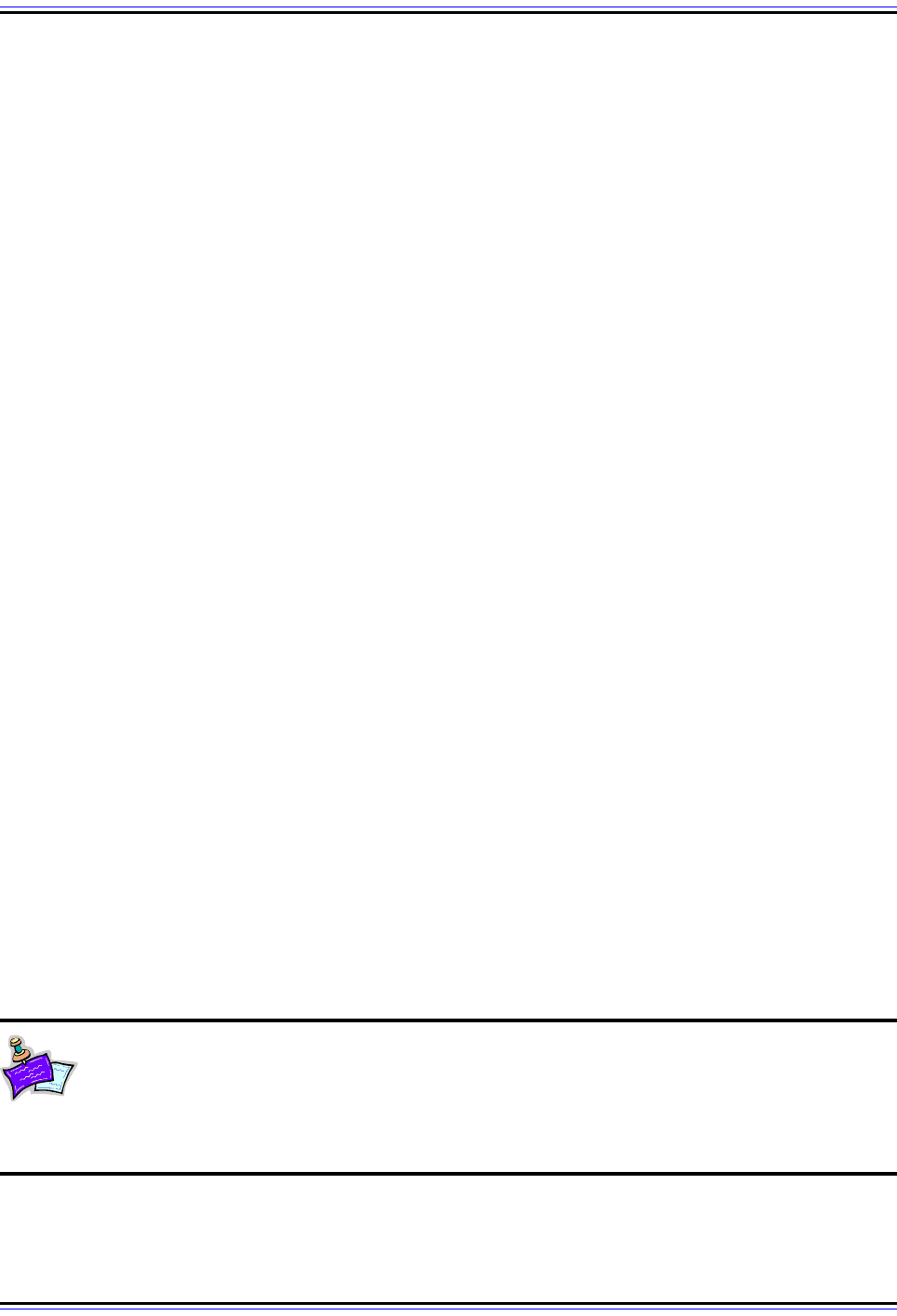
The TCP/IP Guide - Version 3.0 (Contents) ` 363 _ © 2001-2005 Charles M. Kozierok. All Rights Reserved.
the division occurs? Instead of carrying the subnet mask of 255.255.248.0 around, why not
just say “divide the IP address after bit #21”? Even if devices want to perform a masking
operation, could they not just create the mask as needed?
That's a very good question. There are two historical reasons: efficiency considerations and
support for non-contiguous masks.
Efficiency
The subnet mask expression is efficient, in that it allows routers to perform a quick masking
operation to determine the subnet address. This improves performance; remember that
computers were much slower when this system was developed. Today this is not really that
much of an issue.
Support For Non-Contiguous Masks
RFC 950 actually specified that when splitting the bits in the host ID for subnet ID and host
ID, it was possible to split it in more than one place! In the example above, we could,
instead of splitting the 16 bits into 5 bits for subnet ID and 11 for host ID, have done it as 2
bits for the subnet ID, then 4 bits for the host ID, then 3 more bits for the subnet ID and
finally 7 more bits for host ID. This would be represented by the subnet mask pattern
“11000011 10000000” for those sixteen bits (following the sixteen ones for the network ID).
Why do this instead of just dividing as 5 bits for subnet ID followed by 11 bits for host ID as
we did before? I have no idea. ☺ In fact, most other people had no idea either. Trying to
subnet this way makes assigning addresses extremely confusing. For this reason, while it
was technically legal, the use of non-contiguous subnet masking was not recommended,
and not done in practice.
Given that non-contiguous masks are not used, and today's computers are more efficient,
the alternative method of expressing masks with just a single number is now often used.
Instead of specifying “IP address of 154.71.150.42 with subnet mask of 255.255.248.0”, we
can just say “154.71.150.42/21”. This is sometimes called slash notation or CIDR notation.
It is more commonly used in variable-length masking (VLSM) environments, and as the
second name implies, is also the standard for specifying classless addresses under the
CIDR addressing scheme. However, it is also sometimes seen in regular subnetting
discussions.
Note: Since these weird masks were never really used, some resources say that
the subnet mask always had to be contiguous, but this is not true—originally, it
was legal but “advised against”. Later this practice became so out-of-favor that
many hardware devices would not support it. Today, now that classless addressing and
CIDR are standard, it is simply illegal.
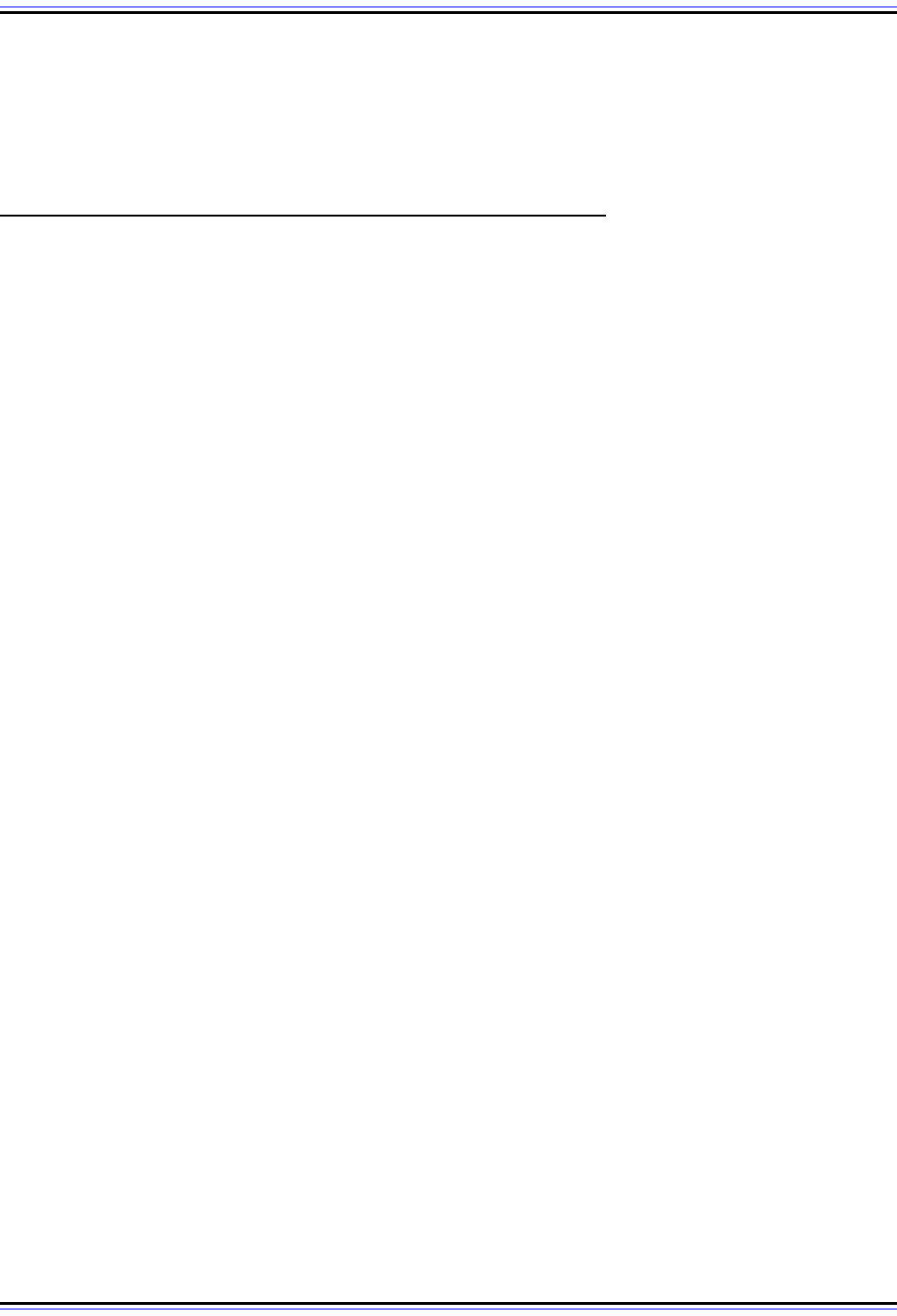
The TCP/IP Guide - Version 3.0 (Contents) ` 364 _ © 2001-2005 Charles M. Kozierok. All Rights Reserved.
If you've never subnetted before, this topic may have left you with your head spinning,
despite our looking at an example. Don't worry. It will all become more clear as you become
more familiar with subnetting by following the rest of this section. Remember also that I
have included a whole section that shows how to subnet step by step, including determining
the subnet mask.
IP Default Subnet Masks For Address Classes A, B and C
Subnetting is the process of dividing a Class A, B or C network into subnets, as we've seen
in the preceding topics. In order to better understand how this “division of the whole” is
accomplished, it's worth starting with a look at how the “whole” class A, B and C networks
are represented in a subnetted environment. This is also of value because there are situa-
tions where you may need to define an unsubnetted network using subnetting notation.
This might seem like a strange concept—if you aren't going to bother creating subnets, why
do you need to consider how the old-fashioned classes are used under subnetting? The
answer is that after subnetting became popular, most operating systems and networking
hardware and software were designed under the assumption that subnetting would be
used. Even if you decide not to subnet, you may need to express your unsubnetted network
using a subnet mask.
In essence, a non-subnetted class A, B or C network can be considered the “default case”
of the more general, custom-subnetted network. Specifically, it is the case where we choose
to divide the host ID so that zero bits are used for the subnet ID and all the bits are used for
the host ID. I realize that this seems like a bit of a semantic game. However, this default
case is the basis for the more practical subnetting we will examine in the next topic.
Just as is always the case, the subnet mask for a default, unsubnetted class A, B or C
network has ones for each bit that is used for network ID or subnet ID, and zeroes for the
host ID bits. Of course, we just said we aren't subnetting, so there are no subnet ID bits!
Thus, the subnet mask for this default case has 1s for the network ID portion and 0s for the
host ID portion. This is called the default subnet mask for each of the IP address classes.
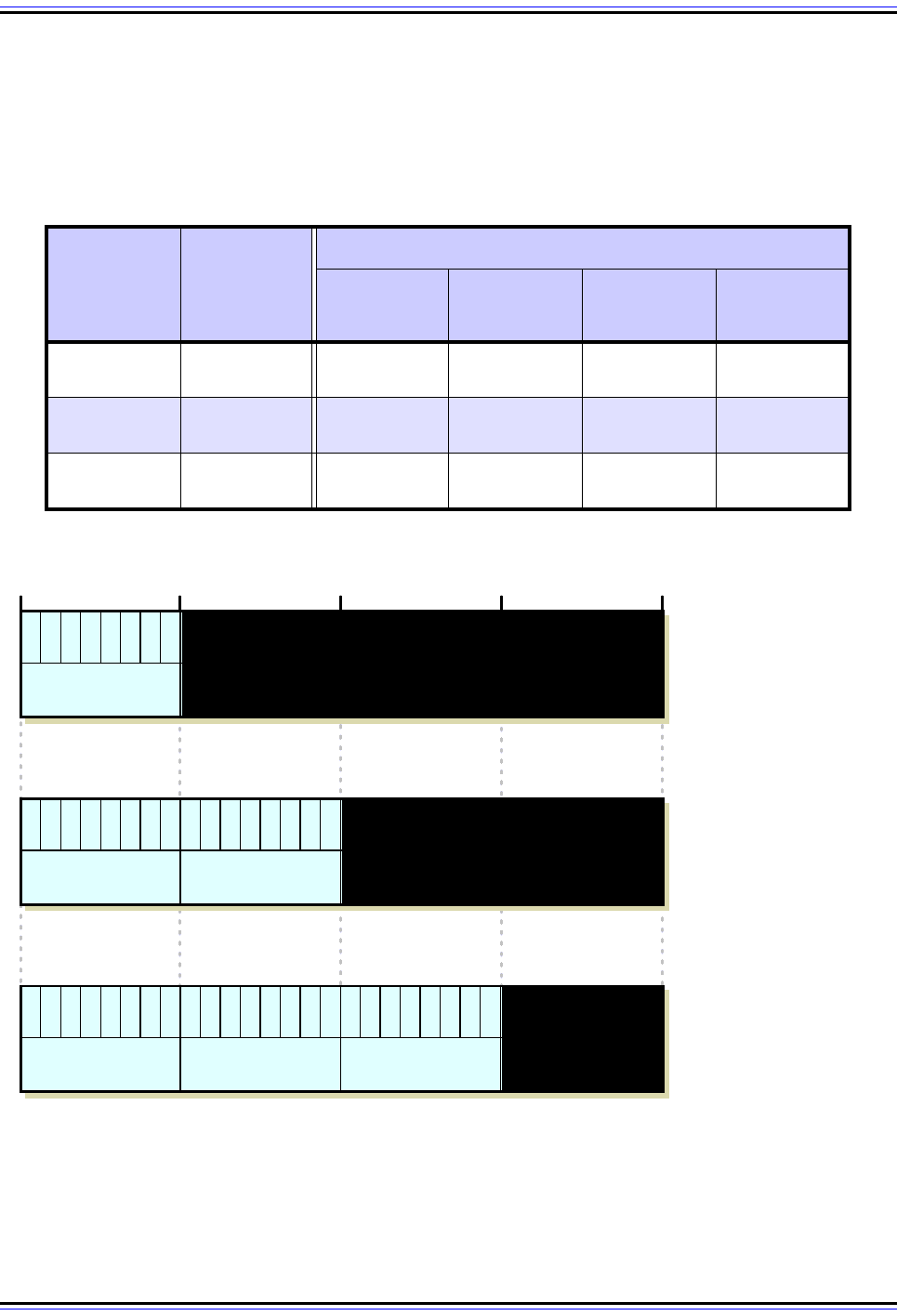
The TCP/IP Guide - Version 3.0 (Contents) ` 365 _ © 2001-2005 Charles M. Kozierok. All Rights Reserved.
Since classes A, B and C divide the network ID from the host ID on octet boundaries, the
subnet mask will always have all ones or all zeroes in an octet. Therefore, the default
subnet masks will always have 255s or 0s when expressed in decimal notation. Table 52
summarizes the default subnet masks for each of the classes; they are also shown graphi-
cally in Figure 68.
Table 52: Default Subnet Masks for Class A, Class B and Class C Networks
IP Address
Class
Total # Of
Bits For
Network ID /
Host ID
Default Subnet Mask
First Octet
Second
Octet
Third Octet
Fourth
Octet
Class A 8 / 24
11111111
(255)
00000000
(0)
00000000
(0)
00000000
(0)
Class B 16 / 16
11111111
(255)
11111111
(255)
00000000
(0)
00000000
(0)
Class C 24 / 8
11111111
(255)
11111111
(255)
11111111
(255)
00000000
(0)
Figure 68: Default Subnet Masks for Class A, Class B and Class C Networks
81624320
1 1 1 1 1 1 1 1 1 1 1 1 1 1 1 1 0 0 0 0 0 0 0 0 0 0 0 0 0 0 0 0
255 255 0 0
Class A Default
Subnet Mask
(255.0.0.0)
1 1 1 1 1 1 1 1 1 1 1 1 1 1 1 1 1 1 1 1 1 1 1 1 0 0 0 0 0 0 0 0
255 255 255 0
1 1 1 1 1 1 1 1 0 0 0 0 0 0 0 0 0 0 0 0 0 0 0 0 0 0 0 0 0 0 0 0
255 0 0 0
Class B Default
Subnet Mask
(255.255.0.0)
Class C Default
Subnet Mask
(255.255.255.0)
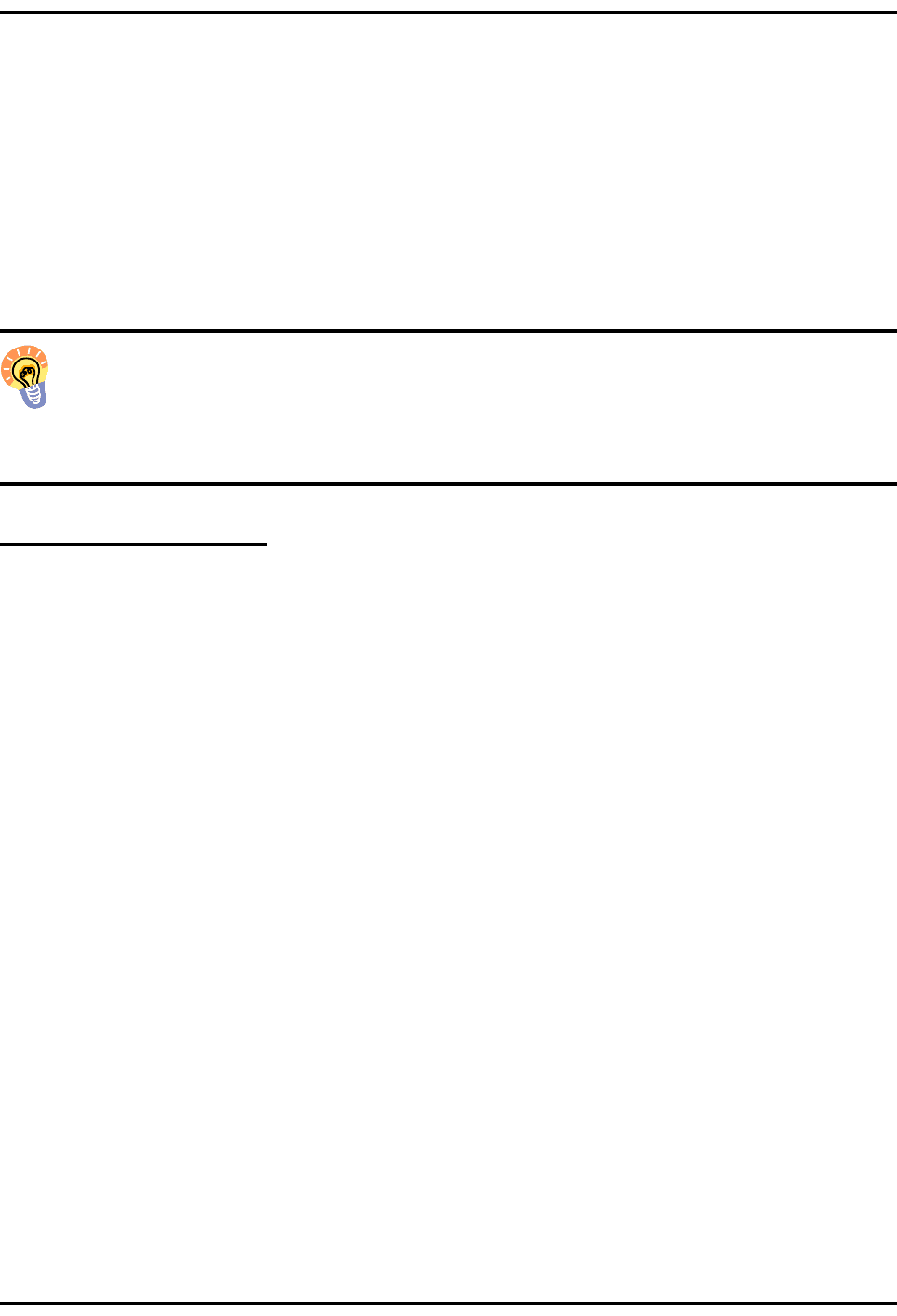
The TCP/IP Guide - Version 3.0 (Contents) ` 366 _ © 2001-2005 Charles M. Kozierok. All Rights Reserved.
So, the three default subnet masks are 255.0.0.0 for Class A, 255.255.0.0 for class B, and
255.255.255.0 for Class C. Note that while all default subnet masks use only “255” and “0”,
not all subnet masks with “255” and “0” are defaults. There are a small number of custom
subnets that divide on octet boundaries as well. These are:
☯ 255.255.0.0:,This is the default mask for Class B, but can also be the custom subnet
mask for dividing a Class A network using 8 bits for the subnet ID (leaving 16 bits for
the host ID).
☯ 255.255.255.0: This is the default subnet mask for Class C, but can be a custom Class
A with 16 bits for the subnet ID or a Class B with 8 bits for the subnet ID.
Key Concept: Each of the three IP unicast/broadcast address classes, A, B and C,
has a default subnet mask defined that has a one for each bit of the class’s network
ID, a zero bit for each bit of its host ID, and no subnet ID bits. The three default
subnet masks are 255.0.0.0 for Class A, 255.255.0.0 for class B, and 255.255.255.0 for
Class C.
IP Custom Subnet Masks
It's important to understand what default subnet masks are and how they work. A default
subnet mask doesn't really represent subnetting, however, since it is the case where we are
assigning zero bits to the subnet ID. To do “real” subnetting we must dedicate at least one
of the bits of the pre-subnetted host ID to the subnet ID, as shown in the example in the
topic that introduced subnet masks.
Since we have the ability to customize our choice of dividing point between subnet ID and
host ID to suit the needs of our network, this is sometimes called customized subnetting.
The subnet mask that we use when creating a customized subnet is, in turn, called a
custom subnet mask. The custom subnet mask is used by network hardware to determine
how we have decided to divide the subnet ID from the host ID in our network.
Deciding How Many Subnet Bits to Use
The key decision in customized subnetting is how many bits to take from the host ID portion
of the IP address to put into the subnet ID. Recall that the number of subnets possible on
our network is two to the power of the number of bits we use to express the subnet ID, and
the number of hosts possible per subnet is two to the power of the number of bits left in the
host ID (less two, which I will explain later in this topic).
Thus, the decision of how many bits to use for each of the subnet ID and host ID represents
a fundamental trade-off in subnet addressing:
☯ Each bit taken from the host ID for the subnet ID doubles the number of subnets that
are possible in the network.
☯ Each bit taken from the host ID for the subnet ID (approximately) halves the number of
hosts that are possible within each subnet on the network.
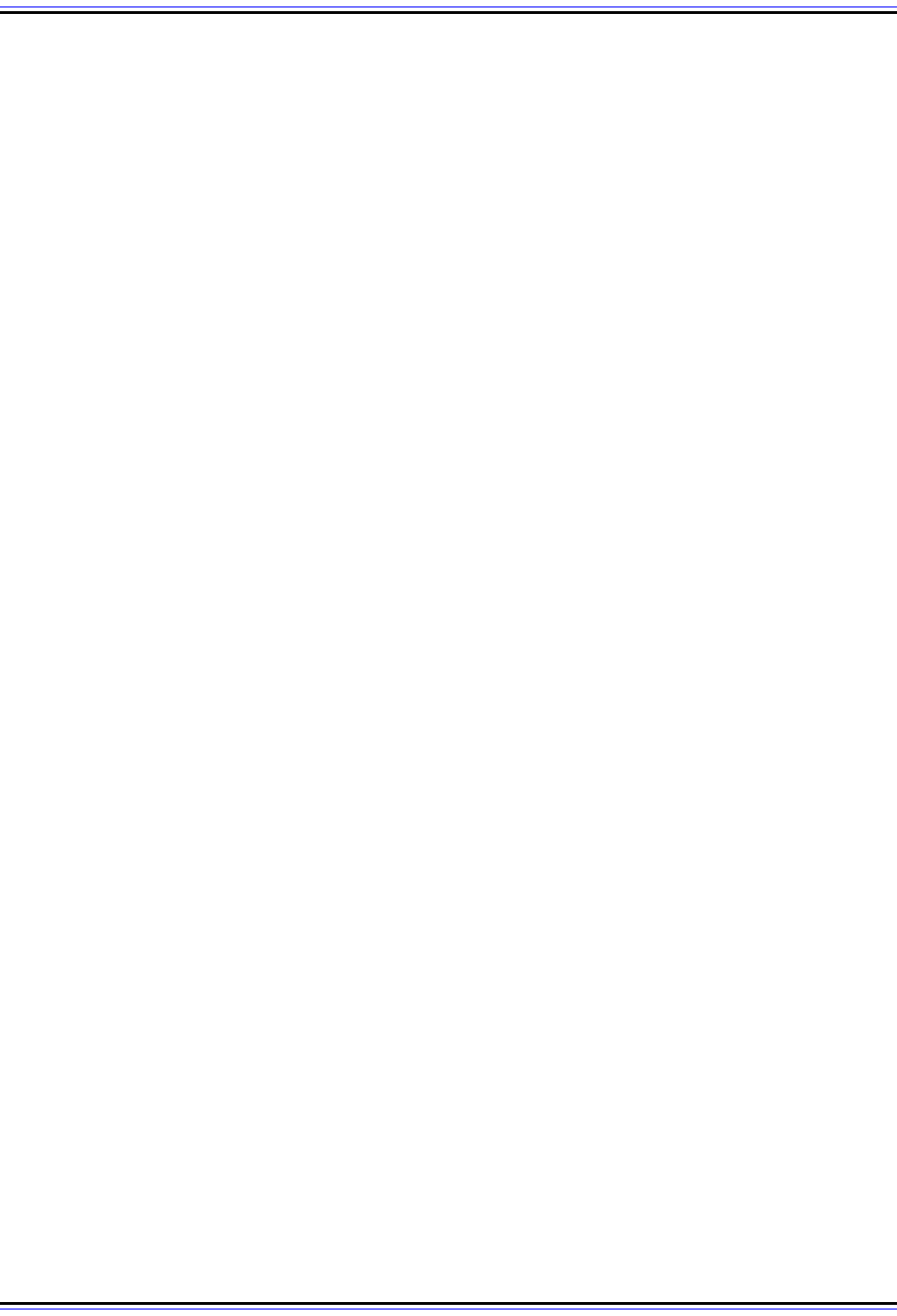
The TCP/IP Guide - Version 3.0 (Contents) ` 367 _ © 2001-2005 Charles M. Kozierok. All Rights Reserved.
Subnetting Bit Allocation Options
Let's take a brief example or two to see how this works. Imagine that we start with a Class B
network with the network address 154.71.0.0. Since this is Class B, 16 bits are for the
network ID (154.71) and 16 are for the host ID. In the default case there are no subnets
(well, one “subnet” that is the whole network) and 65,534 hosts total. To subnet this
network, we have a number of choices:
1. We can decide to use 1 bit for the subnet ID and 15 bits for the host ID. If we do this,
then the total number of subnets is 2
1
or 2: the first subnet is 0 and the second is 1.
The number of hosts available for each subnet is 2
15
-2 or 32,766.
2. We can use 2 bits for the subnet ID and 14 for the host ID. In this case, we double the
number of subnets: we now have 2
2
or 4 subnets: 00, 01, 10 and 11 (subnets 0, 1, 2
and 3). But the number of hosts is now only 2
14
-2 or 16,382.
3. We can use any other combination of bits that add up to 16, as long as they allow us at
least 2 hosts per subnet: 4 and 12, 5 and 11, and so on.
Trading Off Bit Allocations To Meet Subnetting Requirements
How do we decide how to divide the “classful” host ID into subnet ID and host ID bits? This
is the key design decision in subnetting. We must make this choice based on our require-
ments for the number of subnets that exist in the network, and also on the maximum
number of hosts that need to be assigned to each subnet in the network. For example,
suppose we have 10 total subnets for our Class B network. We need 4 bits to represent this,
because 2
4
is 16 while 2
3
is only 8. This leaves 12 bits for the host ID, for a maximum of
4,094 hosts per subnet.
However, suppose instead that we have 20 subnets. If so, 4 bits for subnet ID won't suffice:
we need 5 bits (2
5
=32). This means in turn that we now have only 11 bits for the host ID, for
a maximum of 2,046 hosts per subnet. Step #2 of the practical subnetting example
discusses these decisions in more detail.
Now, what happens if we have 20 subnets and also need a maximum of 3,000 hosts per
subnet? Well, we have a problem. We need 5 bits to express 20 different subnets. However,
we need 12 bits to express the number 3,000 for the host ID. That's 17 bits—too many. The
solution? We might be able to shuffle our physical networks so that we only have 16. If not,
we need a second Class B network.
It's also important to realize that in regular subnetting, the choice of how many bits to use
for the subnet ID is fixed for the entire network. You can't have subnets of different sizes—
they must all be the same. Thus, the number of hosts in the largest subnet will dictate how
many bits you need for the host ID. This means that in the case above, if you had a strange
configuration where 19 subnets had only 100 hosts each but the 20th had 3,000, you'd have
a problem. If this were the case, you could solve the problem easily by dividing that one
oversized subnet into two or more smaller ones. An enhancement to subnetting called
Variable Length Subnet Masking (VLSM) was created in large part to remove this
restriction.
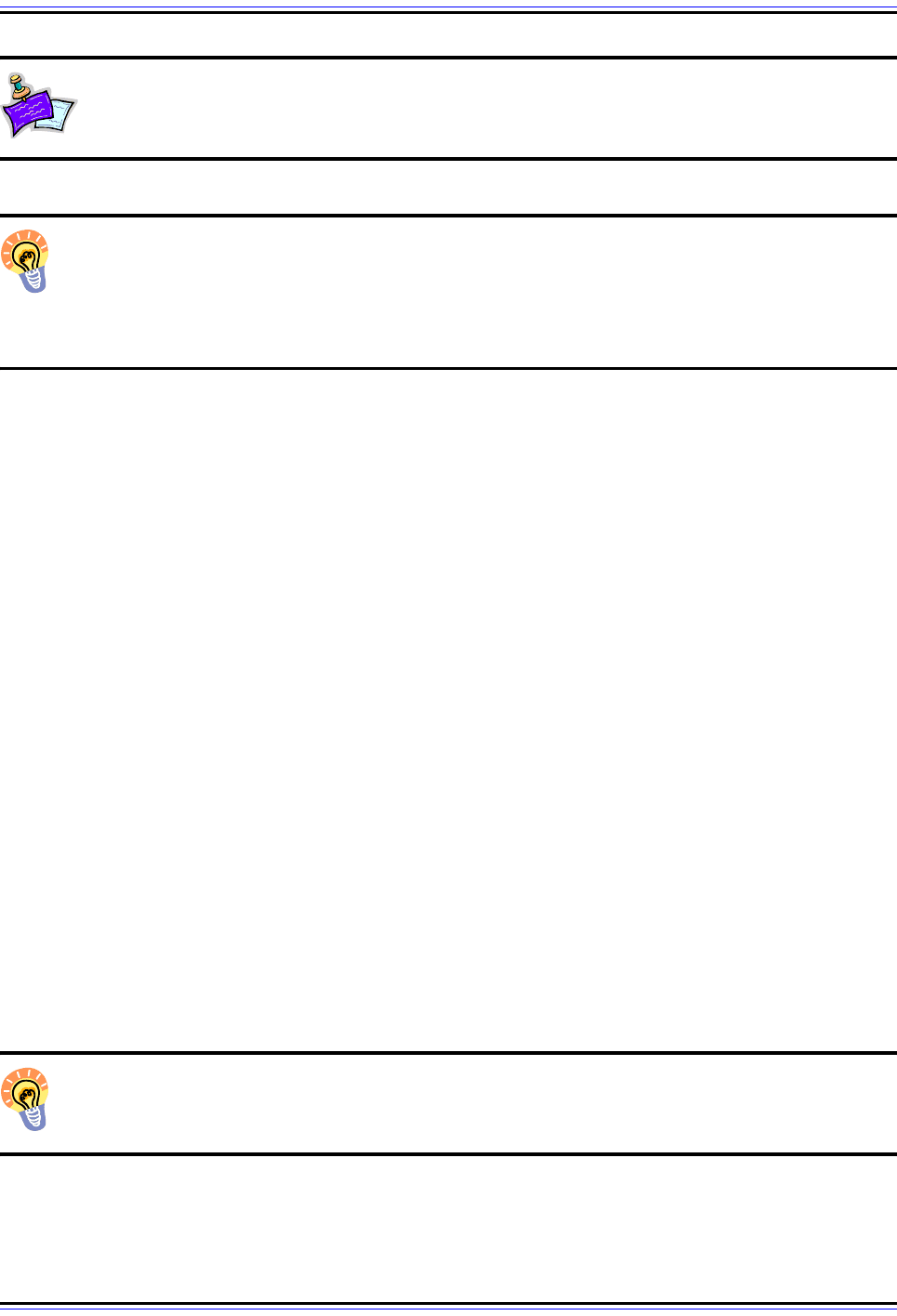
The TCP/IP Guide - Version 3.0 (Contents) ` 368 _ © 2001-2005 Charles M. Kozierok. All Rights Reserved.
Note: I have included summary tables that show the trade-off in subnetting each of
Classes A, B and C, and the subnet mask for each of the choices.
Key Concept: The fundamental trade-off in subnetting: each addition of a bit to the
subnet ID (and thus, subtraction of that bit from the host ID) doubles the number of
subnets, and approximately halves the number of hosts in each subnet. Each
subtraction of a bit from the subnet ID (and addition of that bit to the host ID) does the
opposite.
Determining the Custom Subnet Mask
Once we have determined how many bits we are going to devote to the subnet ID and the
host ID, we can figure out the subnet mask. This is fairly easy to do, now that we under-
stand how subnetting works. We begin with the default subnet mask in binary for the
appropriate class of our network. We then start with the left-most zero in that mask and
change as many bits to 1 as we have dedicated to the subnet ID. We can then express the
subnet mask in dotted decimal form. Figure 69 shows how the custom subnet mask can be
determined for each of the subnetting options of a Class C network, in both binary and
decimal.
So, to take the example in that figure, consider the Class C network 200.13.94.0. There are
8 bits in the original host ID, which gives us six different subnetting options (we can’t use 7
or 8 bits for the subnet ID, for reasons we will discuss shortly.) Suppose we use three of
these for the subnet ID and five are left for the host ID. To determine the custom subnet
mask, we start with the Class C default subnet mask:
11111111 11111111 11111111 00000000
We then change the first three zeroes to ones, to get the custom subnet mask:
11111111 11111111 11111111 11100000
In dotted decimal format, this is 255.255.255.224.
Key Concept: Once the choice of how to subnet has been made, the custom subnet
mask is determined simply, by starting with the default subnet mask for the network
and changing each subnet ID bit from a 0 to a 1.
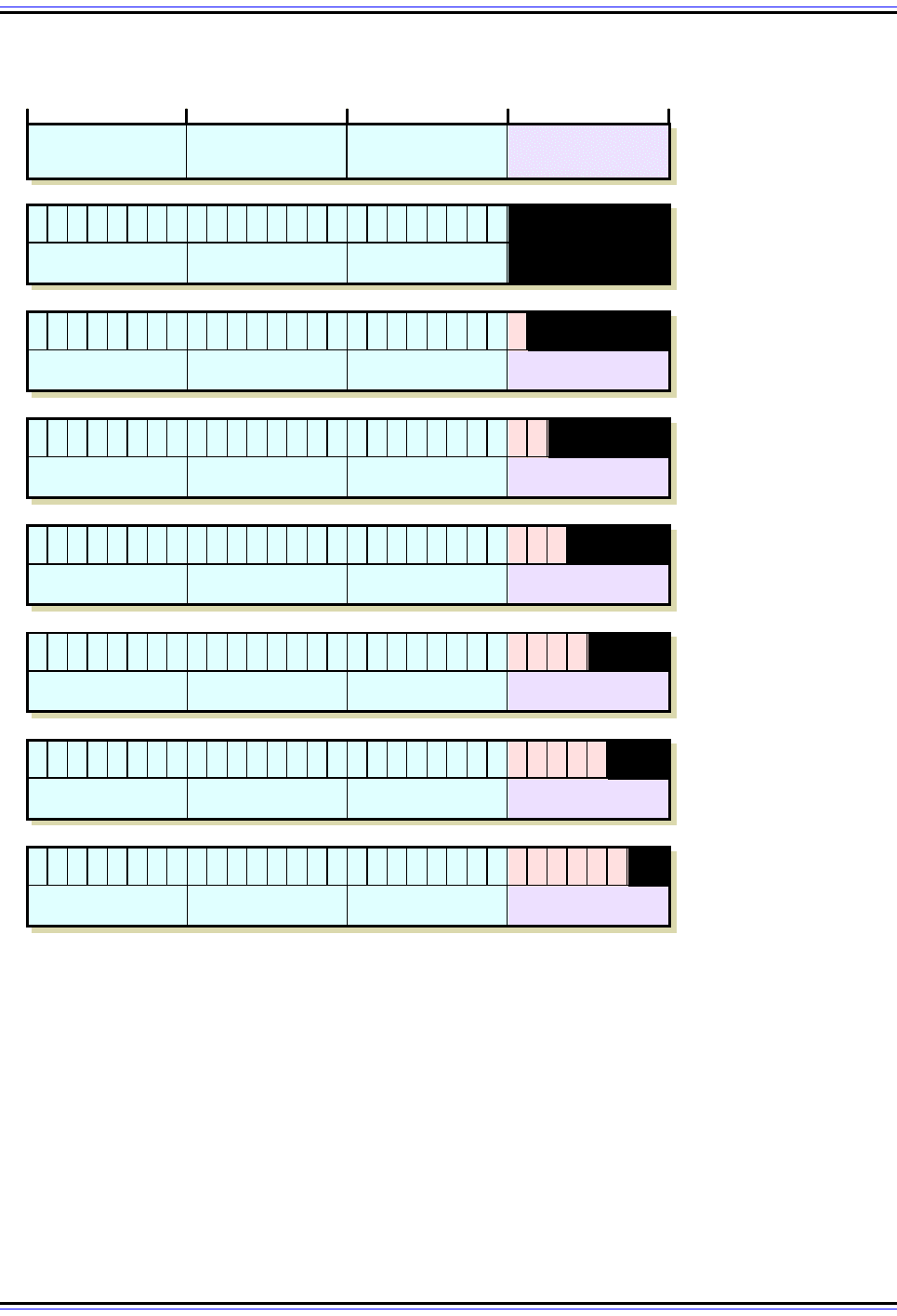
The TCP/IP Guide - Version 3.0 (Contents) ` 369 _ © 2001-2005 Charles M. Kozierok. All Rights Reserved.
Subtracting Two From the Number of Hosts Per Subnet and (Possibly) Subnets Per
Network
There's one more issue that needs to be explained regarding the split into subnet ID and
host ID. We've already seen how in regular “classful” addressing, we must subtract 2 from
the number of hosts allowed in each network. This is necessary because two host IDs in
each subnet have “special meanings”: the all-zeroes host ID meaning “this network”, and
Figure 69: Custom Subnet Masks for Class C Networks
Since there are 8 host ID bits in a Class C network address, there are six different ways that the network can
be subnetted. Each corresponds to a different custom subnet mask, which is created by changing the
allocated subnet ID bits from zero to one.
81624320
200 13 94
Host ID
(8 bits)
Class C Network
200.13.94.0
0 Subnet ID Bits
8 Host ID Bits
(1 Subnet,
254 Hosts)
1 1 1 1 1 1 1 1 1 1 1 1 1 1 1 1 1 1 1 1 1 1 1 1 0 0 0 0 0 0 0 0
255 255 255 0
1 1 1 1 1 1 1 1 1 1 1 1 1 1 1 1 1 1 1 1 1 1 1 1
1
0 0 0 0 0 0 0
255 255 255 128
1 1 1 1 1 1 1 1 1 1 1 1 1 1 1 1 1 1 1 1 1 1 1 1
1 1
0 0 0 0 0 0
255 255 255 192
1 1 1 1 1 1 1 1 1 1 1 1 1 1 1 1 1 1 1 1 1 1 1 1
1 1 1
0 0 0 0 0
255 255 255 224
1 1 1 1 1 1 1 1 1 1 1 1 1 1 1 1 1 1 1 1 1 1 1 1
1 1 1 1
0 0 0 0
255 255 255 240
1 1 1 1 1 1 1 1 1 1 1 1 1 1 1 1 1 1 1 1 1 1 1 1
1 1 1 1 1
0 0 0
255 255 255 248
1 1 1 1 1 1 1 1 1 1 1 1 1 1 1 1 1 1 1 1 1 1 1 1
1 1 1 1 1 1
0 0
255 255 255 252
1 Subnet ID Bit
7 Host ID Bits
(2 Subnets,
126 Hosts Each)
2 Subnet ID Bits
6 Host ID Bits
(4 Subnets,
62 Hosts Each)
3 Subnet ID Bit
5 Host ID Bits
(8 Subnets,
30 Hosts Each)
4 Subnet ID Bit
4 Host ID Bits
(16 Subnets,
14 Hosts Each)
5 Subnet ID Bit
3 Host ID Bits
(32 Subnets,
6 Hosts Each)
6 Subnet ID Bit
2 Host ID Bits
(64 Subnets,
2 Hosts Each)
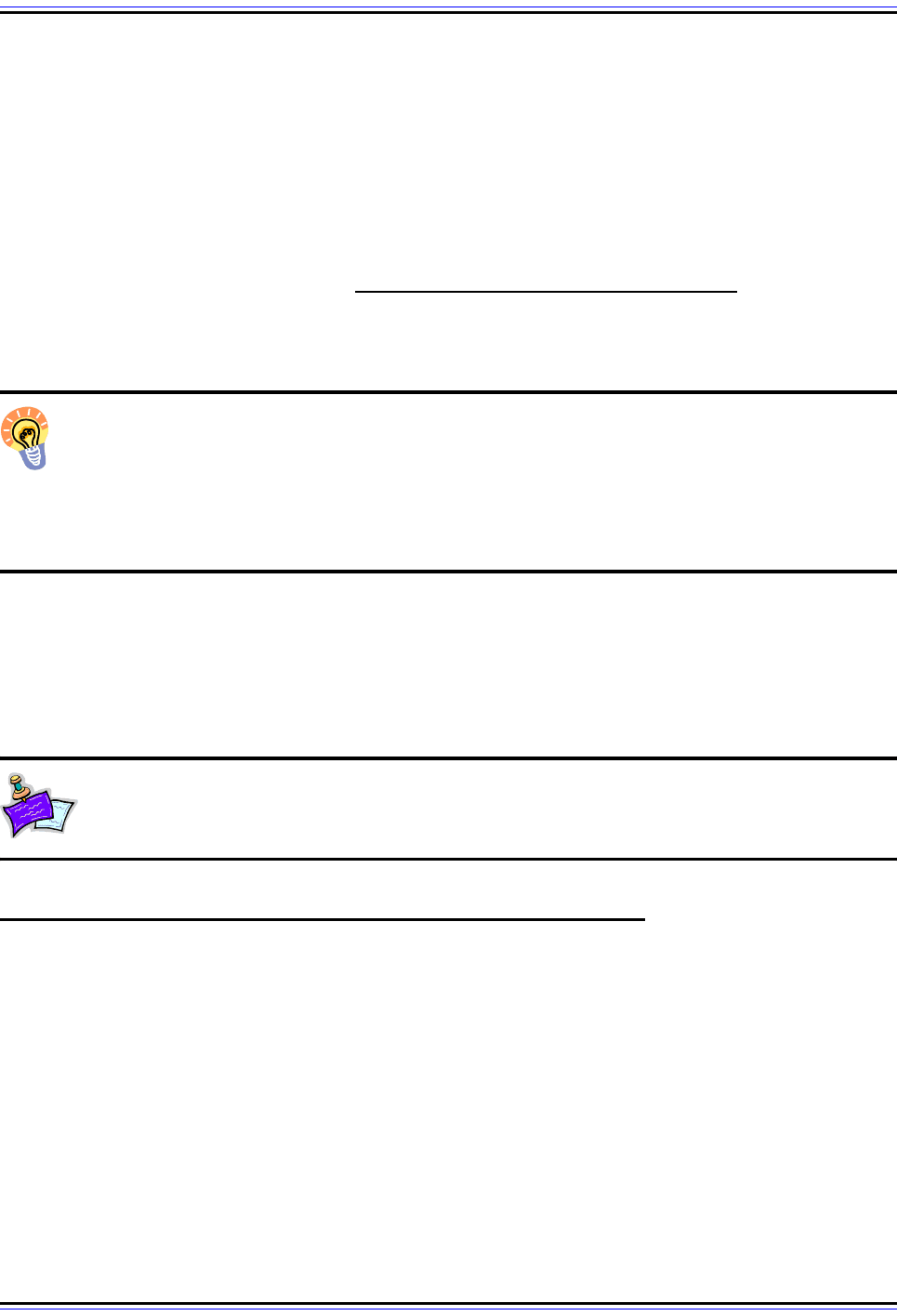
The TCP/IP Guide - Version 3.0 (Contents) ` 370 _ © 2001-2005 Charles M. Kozierok. All Rights Reserved.
the all-ones host ID which is a broadcast to “all hosts on the network”. These restrictions
apply also to each subnet under subnetting too, which is why we must continue to subtract
2 from the number of hosts per subnet. (This is also why dividing the 8 host ID bits of a
Class C network into 7 bits for subnet ID and 1 bit for host ID is not just silly, but in fact
meaningless: it leaves 2
1
-2=0 hosts per subnet. Not particularly useful.)
There is a similar issue that occurs with the subnet ID as well. When subnetting was origi-
nally defined in RFC 950, the standard specifically excluded the use of the all-zeroes and
all-ones subnets. This was due to concern that routers might become confused by these
cases. A later standard, RFC 1812 (Requirements for IP Version 4 Routers
) removed this
restriction in 1995. Thus, modern hardware now has no problem with the all-zeroes or all-
ones subnets, but some very old hardware may still balk at it.
Key Concept: The number of hosts allowed in each subnet is the binary power of
the number of host ID bits remaining after subnetting, less two. The reduction by two
occurs because the all-zeroes and all-ones host IDs within each subnet are reserved
for two “special meaning” addresses: to refer to the subnetwork itself and its local broadcast
address. In some implementations, the number of subnets is also reduced by two because
the all-zeroes and all-ones subnet IDs were originally not allowed to be used.
For this reason, you will sometimes see discussions of subnetting that exclude these cases.
When that is done, you lose 2 potential subnets: the all-zeroes and all-ones subnets. If you
do this, then choosing 1 bit for subnet ID is no longer valid, as it yields 2
1
-2=0 subnets. You
must choose 2 bits if you need 2 subnets.
Note: In this Guide I assume we are dealing with modern hardware and do not
exclude the all-zeroes and all-ones subnets, but I do try to make explicit note of
this fact wherever relevant.
IP Subnet Identifiers, Subnet Addresses and Host Addresses
The main advantage of conventional “classful” addressing without subnets is its simplicity.
Even though we've seen that there can be problems with how to manage thousands of
devices in a single Class B network, for example, there is little complexity in how to assign
addresses within the network. They are all lumped together, so any combination of bits can
be used within the host ID (except for all-zeroes and all-ones, which are special).
When we subnet, however, we create a two-level structure within the “classful” host ID—
subnet ID and host ID. This means we must choose IP addresses for devices more
carefully. In theory, we are selecting subnets to correspond to our physical networks within
the organization, so we want to assign IP addresses in a way that is consistent with our
physical network structure.
